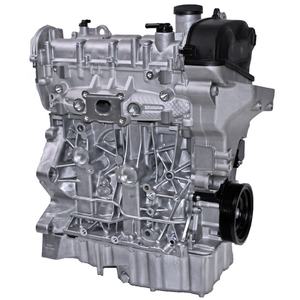Opel Corsa Engine: Common Issues and How to Repair Them
Opel Corsa Engine: Common Issues and How to Repair Them
Blog Article
Discovering the Inner Operation of a Compact Vehicle's Engine System
As vehicle drivers, we typically take for given the intricate procedures that occur within the boundaries of our car's engine system. In this expedition of a small vehicle's engine system, we will certainly unravel the inner workings of this mechanical harmony, shedding light on the mysteries that drive us onward on our day-to-day trips.
Combustion Refine Introduction
The combustion procedure in a portable automobile's engine system is an important system that effectively transforms fuel right into energy to power the car. This procedure takes place within the burning chamber of the engine, where fuel and air mix, spark, and create controlled explosions. The burning process includes 4 main phases: consumption, exhaust, compression, and power.
Throughout the consumption stage, the piston moves downward, drawing in a blend of air and gas into the combustion chamber. The following phase, compression, includes the piston relocating upwards, compressing the air-fuel mix to boost its effectiveness. Consequently, in the power stage, the ignition system ignites the pressed blend, leading to a rapid expansion of gases that forces the piston pull back. This downward motion creates the power required to drive the automobile. Ultimately, in the exhaust stage, the burnt gases are gotten rid of from the burning chamber through the exhaust valve, preparing the chamber for the following cycle. This cyclic burning procedure is fundamental to the procedure of a small vehicle's engine system, making certain efficient power conversion for propulsion.
Piston and Cyndrical Tube Interaction

The piston's accurate fit within the cyndrical tube is necessary for preserving optimal compression and protecting against power loss during burning. Limited clearances in between the piston and cylinder wall surfaces ensure reliable securing, allowing the piston to move smoothly without allowing gases to leakage past. Proper lubrication is additionally crucial to minimize rubbing and put on between these parts, improving durability and performance.
Additionally, the layout and materials made use of in manufacturing the piston and cyndrical tube influence engine effectiveness and toughness. Modern engines commonly employ light-weight yet long lasting products like light weight aluminum alloys for pistons and cylinder liners to decrease inertia and boost thermal efficiency. On the whole, the unified communication between the piston and cyndrical tube is essential to the engine's performance and general efficiency.
Fuel Injection System Capability
Gas injection systems in compact lorry engines play an description important function in specifically supplying fuel to the combustion chamber for controlled and efficient ignition. The gas injection system operates by infusing gas into the combustion chamber at the optimal moment during the engine's procedure (opel corsa engine). This precise timing makes sure that the gas blends evenly with the air for correct combustion, causing boosted fuel performance and lowered exhausts
There are primarily 2 kinds of fuel injection systems used in compact lorry engines: port gas shot (PFI) and straight gas injection (DFI) PFI systems inject fuel into the intake port before the intake shutoff, while DFI systems inject fuel straight right into the combustion chamber. Both systems have their benefits, with DFI using far better gas atomization and PFI giving a more cost-efficient remedy.
Comprehending Engine Air Conditioning Devices
Reliable operation of web a compact lorry's engine counts greatly on the effectiveness of its cooling devices. The cooling system in a small vehicle usually click here to read is composed of a number of elements functioning with each other to manage the engine temperature level. Recognizing these engine cooling systems is crucial for keeping the efficiency and long life of a portable automobile's engine system.

Exhaust System Parts Explained
The optimal functioning of a small automobile's engine air conditioning devices relies on a corresponding system referred to as the exhaust system, which makes up numerous necessary elements for making sure efficient exhausts and engine performance. The exhaust system includes elements such as the exhaust manifold, catalytic converter, muffler, and tailpipe. The exhaust manifold accumulates exhaust gases from the engine's cylinders and paths them to the catalytic converter. The catalytic converter after that converts dangerous toxins in the exhaust into less dangerous emissions prior to releasing them via the muffler and tailpipe.
One critical element of the exhaust system is the oxygen sensor, which monitors the oxygen levels in the exhaust gases to help manage fuel intake and make sure ideal engine efficiency. opel corsa engine. In addition, the resonator may be present in some exhaust systems to decrease sound levels. In general, the exhaust system plays a vital duty in keeping engine effectiveness, reducing harmful exhausts, and making certain a quieter driving experience for compact automobile proprietors

Conclusion
Finally, the portable automobile's engine system is a complicated mix of parts that collaborate to facilitate the combustion procedure, convert fuel into power, and get rid of waste gases. Recognizing the internal operations of the engine system, including the piston and cylinder communication, fuel injection system, engine air conditioning systems, and exhaust system components, is critical for keeping optimal efficiency and effectiveness of the vehicle.
The burning procedure in a compact vehicle's engine system is a vital mechanism that successfully converts fuel into energy to power the automobile.Gas injection systems in small automobile engines play an essential role in exactly supplying fuel to the combustion chamber for reliable and controlled ignition.There are mostly two types of fuel shot systems made use of in portable automobile engines: port fuel shot (PFI) and straight fuel shot (DFI) Comprehending these engine cooling devices is important for maintaining the performance and durability of a small vehicle's engine system.
The optimal performance of a compact vehicle's engine cooling systems depends on a corresponding system known as the exhaust system, which makes up numerous important components for making certain reliable exhausts and engine efficiency.
Report this page